The 2016 research cruise on CCGS Amundsen will take place in Baffin Bay near Broughton Island between June 3rd and July 14th. Over the 6 week period, the 40 scientists aboard the Amundsen will sample the atmosphere, sea ice, water column and the ocean floor in order to investigate the mechanisms that initiate and control the phytoplankton bloom occurring in the marginal ice zone each spring .
In order to better compare the different data and results obtained during the cruise and the ice camp, operations planned for both venue will be as similar as possible. Parameters and variables measured are based on standard biogeochemical variables measured during most oceanographic research cruises (regardless of location). This set of parameters covers all of the domains involved in the highly complex event that is the phytoplankton spring bloom.
People should think about a continuous line of parameters and variables that must be observed and analysed 1- from the sea surface to the sea floor and 2- from microscopic to very large organisms.
To make it easier, and be compatible with the ice camp activities, we have organized the sampling and research interests into working group categories:
- Optics and Physics
- DMS, Bacteria, Organic matter
- Nutrients, PP and PI
- Biodiversity
- Zoo, vertical fluxes & pelago-benthic coupling
How are variables measured?
Sampling the seawater: the Rosette
The Rosette is the heart of an oceanographic cruise. It’s an assemblage of sensors and bottles on a metallic circular frame that we deploy using a winch from the sea surface down to the bottom of the water column. The cable transmits information to and from the rosette allowing the scientists to see crucial biogeochemical information in real time while the rosette is going down.
Water sampling depths can be selected according to the parameters of interest and the bottles can be scheduled to close at the appropriate depthss. A rosette usually caries 24 bottles (Niskin, General oceanics) of 12L each.
Our Rosette will carry the following sensors:
- CTD (seabird 911+) with temperature, conductivity and pressure sensors
- Oxygen sensor
- CDOM fluorometer (WetLabs)
- Chlorophyll a fluorescence sensor (Seapoint)
- PAR sensor (QCP-2300 Biospherical)
- An altimeter (so the rosette does not touch the bottom, Benthos PSA-916)
- An Nitrate sensor (Satlantic ISUS)
- One uplooking and one downlooking LADCP
- An Underwater Video Profiler
- A transmissiometer (WetLabs C-Star)
Sampling the seawater: Autonomous platforms
Increasing, 22nd century oceanography equipment is autonomous. During the Green Edge cruise, 2 different kind of platforms will be deployed: BioArgo floats and Gliders.
BioArgo floats are cylinder-shaped submersible robots equipped with various scientific measurement sensors (typically salinity, temperature, chlorophyll a, and CDOM sensor). They float with the ocean current and profile between surface and 1000m at regular interval sending their data back to the land platform via iridium each time they surface. Four BioArgo floats will be deployed during the Green Edge cruise.
Gliders are torpedo shaped undersea robots equipped with physical and/or biogeochemical sensors. They can be remotely programmed to travel in a meandering path and dive up and down in the water column. We will deploy two gliders during the Green Edge cruise.

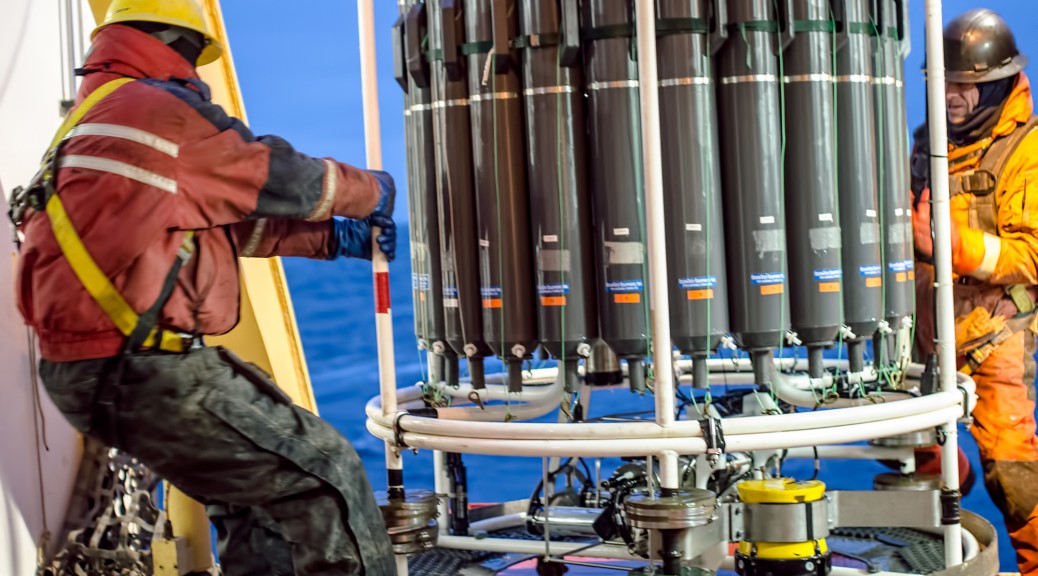
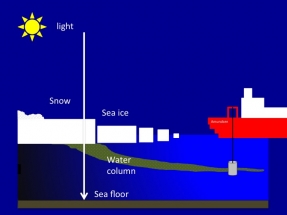
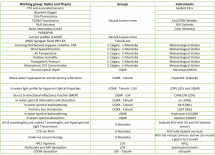

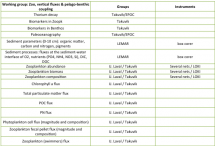

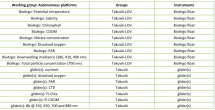
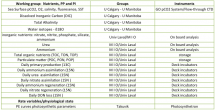


Hello! I’m at work surfing around your blog from my new iphone!
Just wanted to say I love reading your blog and look forward to all your posts!
Carry on the fantastic work!
Great information. Lucky me I recently found your site by accident (stumbleupon).
I’ve saved it for later!
I seriously love your website.. Very nice colors & theme.
Did you create this amazing site yourself? Please reply back as I’m
attempting to create my own blog and would like to learn where you got this from or exactly what the theme
is called. Appreciate it!